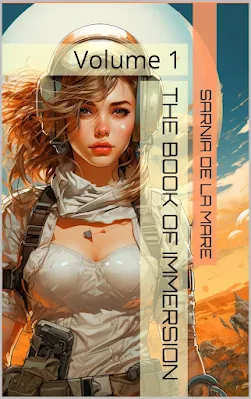"The Universal Thread: Elements All Good Stories Share"
Introduction:
Stories have been an integral part of human culture since time immemorial. From ancient myths and legends to modern novels and films, storytelling is a universal language that transcends boundaries. While each story may have its unique plot and characters, there are certain elements that consistently make a narrative compelling and unforgettable. In this blog, we'll explore the common threads that bind all good stories together, weaving a tapestry that captivates audiences across time and cultures.
Relatable Characters: At the heart of every memorable story are characters that resonate with the audience. Whether it's the hero's journey or the anti-hero's redemption, characters with depth and relatability draw readers or viewers into the narrative. Flaws, struggles, and triumphs make characters authentic and evoke empathy.
Engaging Plot: A well-crafted plot is the backbone of any good story. It's the roadmap that takes the audience on a journey, filled with twists, turns, and unexpected surprises. A balance of conflict, resolution, and rising action keeps the audience invested, eager to discover what happens next.
Conflict and Resolution: Conflict is the fuel that propels a story forward. Whether it's internal or external, the challenges characters face create tension and drive the narrative. However, it's the resolution of these conflicts that satisfies the audience, providing a sense of closure and fulfillment.
Emotional Resonance: The most memorable stories evoke a range of emotions, from joy and laughter to sorrow and fear. Emotional resonance is what connects the audience to the narrative on a deeper level. It's the reason why certain scenes or lines from a story linger in our minds long after we've finished reading or watching.
A Sense of Universality: While stories may be rooted in specific cultures, times, or places, the themes they explore often transcend these boundaries. The universal aspects of love, loss, courage, and the human condition make stories relevant to diverse audiences around the world.
Effective Pacing: Pacing is the rhythm of a story. It involves the careful balance of fast and slow moments, allowing the audience to absorb information, experience tension, and savor climactic scenes. Well-paced stories maintain the audience's interest and prevent them from becoming either overwhelmed or bored.
Thematic Depth: Beyond the surface narrative, good stories often delve into deeper themes that provoke thought and reflection. Whether exploring morality, identity, or the nature of existence, a layer of thematic depth elevates a story from mere entertainment to a work of art.
A Memorable Setting: The setting of a story serves as its backdrop, creating the world in which characters live and events unfold. A vivid and immersive setting enhances the overall experience, making the story more memorable and transporting the audience to new and exciting realms.
Conclusion:
In the vast tapestry of storytelling, these common elements serve as the threads that bind diverse narratives together. Whether through the trials of relatable characters, the twists of a well-crafted plot, or the emotional resonance that lingers, good stories leave an indelible mark on the human psyche. As storytellers continue to weave their tales, understanding and embracing these universal elements can guide the creation of narratives that stand the test of time.









.jpg)
.jpg)
.jpg)
.jpg)

